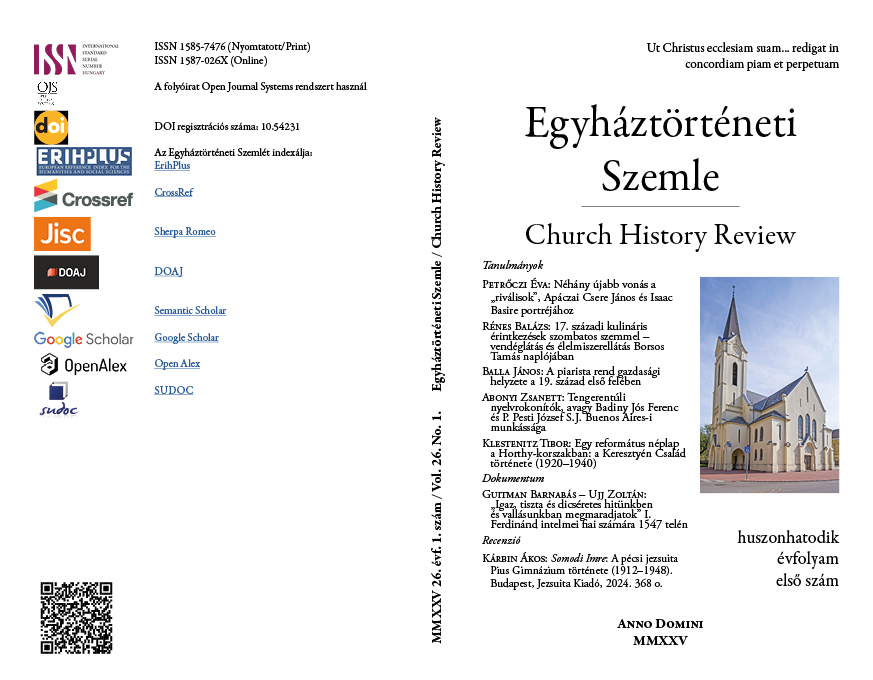The Economic Situation of the Piarist Order in the First Half of the 19th Century
DOI:
https://doi.org/10.54231/ETSZEMLE.26.2025.1.3Keywords:
curch, state, school foundation, economy, 19th centuryAbstract
In 1806, Piarist provincial superior Ignác Egerváry successfully petitioned Francis II, Holy Roman Emperor to grant the estate of the canon of Székesfehérvár to the Piarist Order. This generous donation marked not only the beginning of the slow financial recovery of the province, but also the emergence of a new kind of economic mindset—most clearly reflected in five substantial account books kept by the provincial leadership. These meticulously maintained Latin records provide detailed information on the revenues (proventus) and expenditures (erogationes) of the province from the early 19th century up to 1848. The sources are also significant for offering insight into the financial condition of individual houses within the Order, as financial support provided to them appears regularly among the recorded expenses. Moreover, the documents mention figures such as a Jewish merchant named Figdor, who had economic dealings with the Order, though the exact nature of these relationships remains unclear. The records also raise, albeit indirectly, the issue of communal property (vita communis) among the monks, since several individuals appear as creditors or interest-earners—an aspect that warrants further investigation. In this paper, I aim primarily to present the five account books, highlight their value as sources, and focus on select years from an economic history perspective.
Downloads
Downloads
Published
Conference Proceedings Volume
Section
Categories
License
Copyright (c) 2025 Balla János (Szerző)

This work is licensed under a Creative Commons Attribution 4.0 International License.
The author(s) reserve the copyright of their work.
The Church History Review does not restrict the rights of authors to place their manuscripts or manuscript versions on preprint servers or other hosting. This applies generally to the following formats.
- Submitted version
- Accepted version (manuscript accepted by the author)
- Published version (Version of Record)









